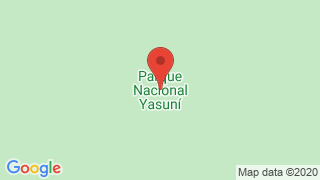Yasuní National Park


Yasuní
The Yasuní Biosphere Reserve is a fascinating miracle of nature that allows us to know the true richness of the Ecuadorian East because it has an immense vegetal and animal diversity. Yasuní is one of the most biodiverse areas of the Earth, with around 150 species of amphibians, 121 of reptiles, 598 species of birds, between 169 and 204 of mammals, in flora 2,113 species have been identified and it is estimated that they would exist around 3100. Yasuní is scientifically classified as a Pleistocene Refuge (Napo-Ucayali), important for its large size, abundant biodiversity.
Yasuní How to get there?
"One option is to arrive at the airport in Francisco de Orellana (Coca), Coca in 45 minutes. In 10 more minutes you reach the river port and take a boat in the direction of Pompeii. Walking along the Napo River you can see the great cedars, ceibos, trees that are more than one hundred years old.
Yasuni National Park
Yasuní National Park was created in 1979 and is located in the central-eastern part of the Ecuadorian Amazon, specifically in the provinces of Orellana and Pastaza between the Napo River and the Curaray River. This conservation unit is the largest in continental Ecuador, covering an area of about 980,000 hectares (2,450,000 acres).
Objective Yasuní National Park (YNP), whose main purpose is the conservation of biodiversity.
-
- The Waorani Territory (TW), home to the people who have inhabited these lands ancestrally.
- The Tagaeri-Taromenane Intangible Zone (ZITT), created by the State to respect the decision of its inhabitants to live in isolation and in a traditional manner. In addition, this Yasuní protects part of the territory of the Waorani nationality, the Tagaeri and the Taromenane, Indigenous Peoples in Voluntary Isolation.
Yasuni National Park Ecuador
Yasuní Fauna
It contains an extraordinary biodiversity. There are about 173 species of mammals, 567 species of birds, 83 species of reptiles, 97 species of amphibians and 249 species of fish.
Part of the park are also the fluvial systems that give life to this paradisiacal place. Some of the most important tributaries of the Napo River are: the Aguarico, the Coca, the Tiputini, the Yasuní, Pañayacu, Payamino, Huamayacu, Itaya, Añanguyacu, Indillama, Yuturiyacu and the Huiririma. The Aguarico River is formed by the union of the rivers Cofanes, Azulea and San Miguelen Pimampiro. It is also considered the Blanco river that flows into the Napo and its major tributaries are Due, Shushufindi, Cuyabeno Sábalo and Lagartococha. Cuyabeno and Lagartococha are classified as black water rivers due to their color, local origin (swamps, rain pools and filtration) and composition (low pH due to acids and tannins). These two are watercourses fed by black water from huge lakes and river systems found within the Cuyabeno Wildlife Reserve.
Yasuní Gastronomy
Their diet is based on yucca, verded, fish, chontaduros, with which they prepare some typical foods from the east.
Yasuní Recognition.
It is for this reason that Yasuní National Park was named a Biosphere Reserve by UNESCO in 1989. The most important rivers in Yasuní National Park are Cononaco, Nashiño and Tiputini.
Yasuní Biodiversity
In Yasuní, surprising biodiversity figures have been reported for several groups of flora and fauna, never before recorded in any protected area.
Yasuní Attractions
The main attraction of the park is the mainland tropical rainforest and the lagoons of Tambococha, Jatuncocha and Añangu.
Yasuní Activities
Hiking, canoeing, kayaking, camping, avitourism, orchid tourism, trekking, scientific tourism, nature tourism, community tourism, ancestral tourism, health tourism, adventure tourism.
Yasuní Recommendations
Requires the assistance of a guide, waterproof clothing, rubber boots, sunscreen, insect repellent, light clothing, flashlight and binoculars. Yellow fever and tetanus vaccines should also be carriedtanos.

Publicado en:
Publicado por:



